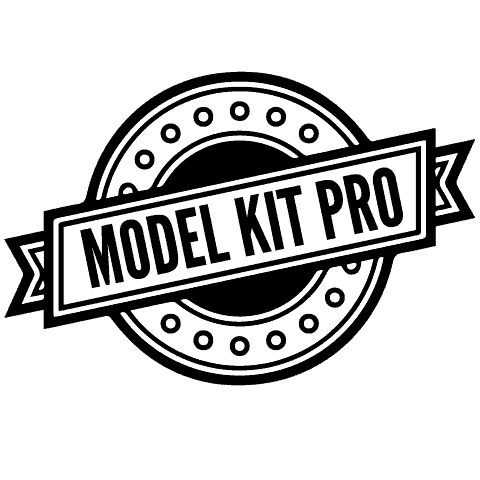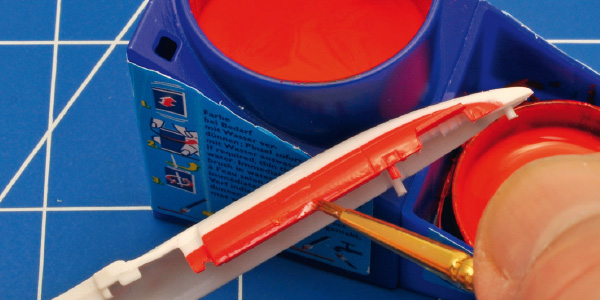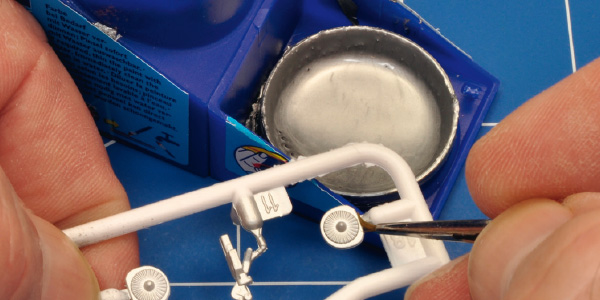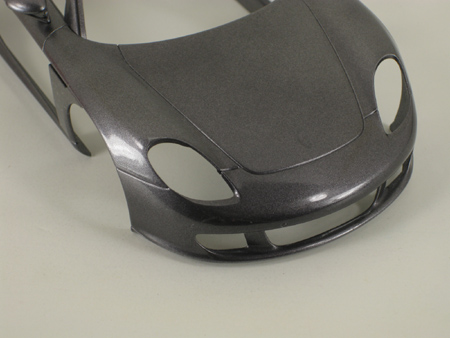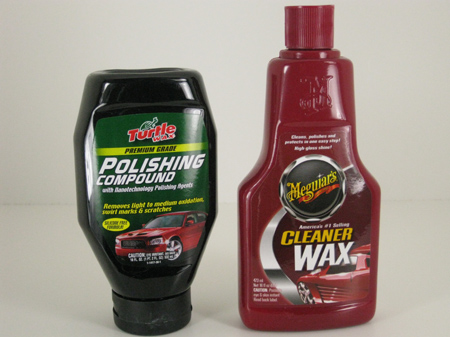Painting our models can be one of the most time consuming parts of our build. When you have spent hours painting a highly detailed scale model for displaying, its nice when you get compliments on a great paint job. After spending countless hours getting all the details of your model correct you want to use a paint that will be a durable finish and dries with a saturated color.
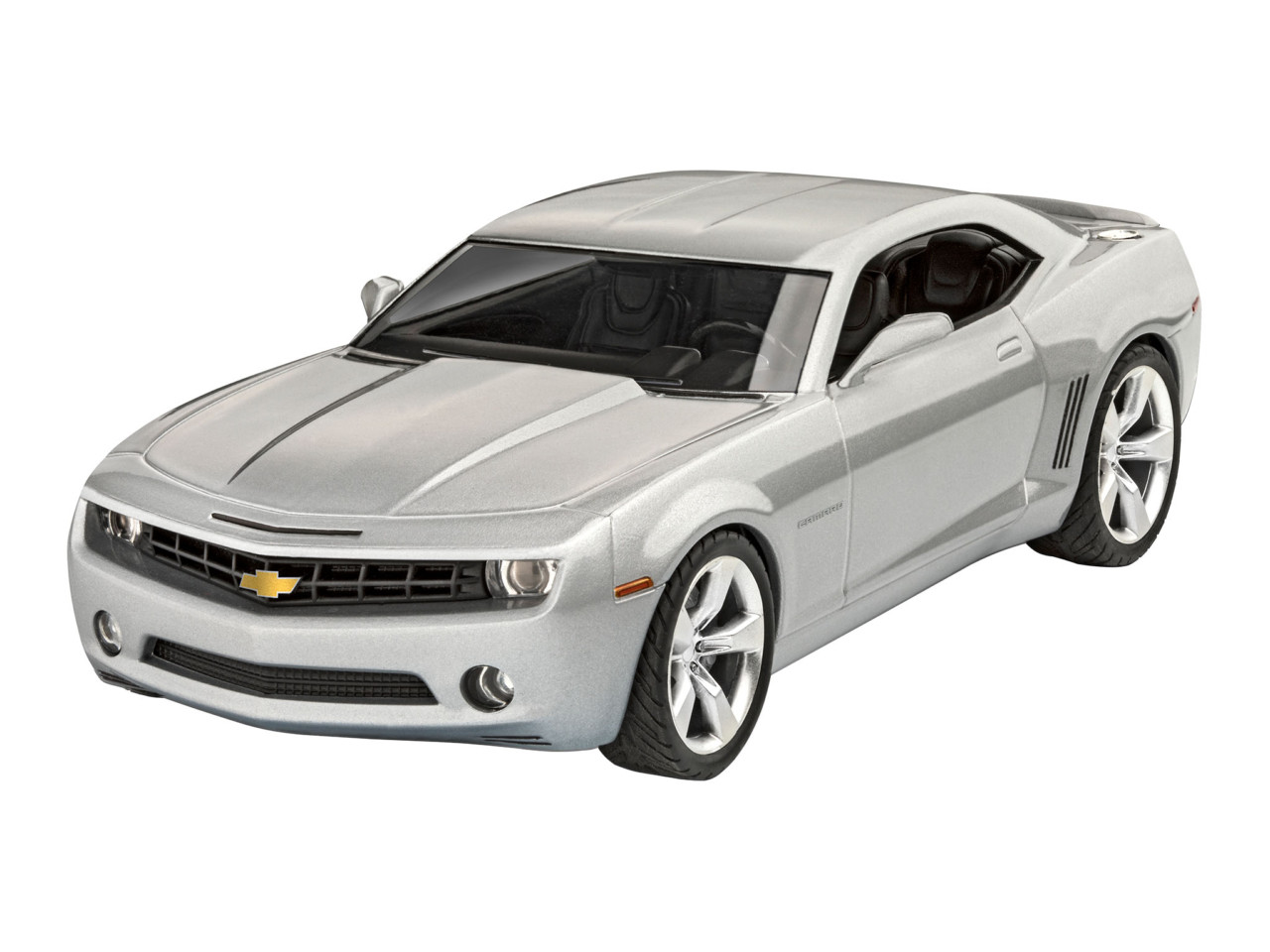
Acrylics are the most preferred for plastic models because of its short drying time. Enamel is the second best option for plastic. Both of these types of paint are easy to use as they should not require thinning. Acrylics and enamels give off less odor than lacquers and are less harmful to the environment.
Should I Start With Primer Before Painting Color On Models?
In my research I have found it is best to primer coat plastic models. This will provide a uniform base for resin materials, DieCast metals or if the model is plastic and will have different colors. This will also cut down on the number of coats needed if you’re painting lighter colors such as white or yellow.
Some modelers will skip the priming step in favor of applying as small amount of paint as possible to preserve the small engraved details such as panel lines, fine details and hatches.
In general, you should not only prime them, but you should wash the parts first. The mold release agents on the plastic will keep the primer from sticking, just as lack of primer will make the paint bond weaker.
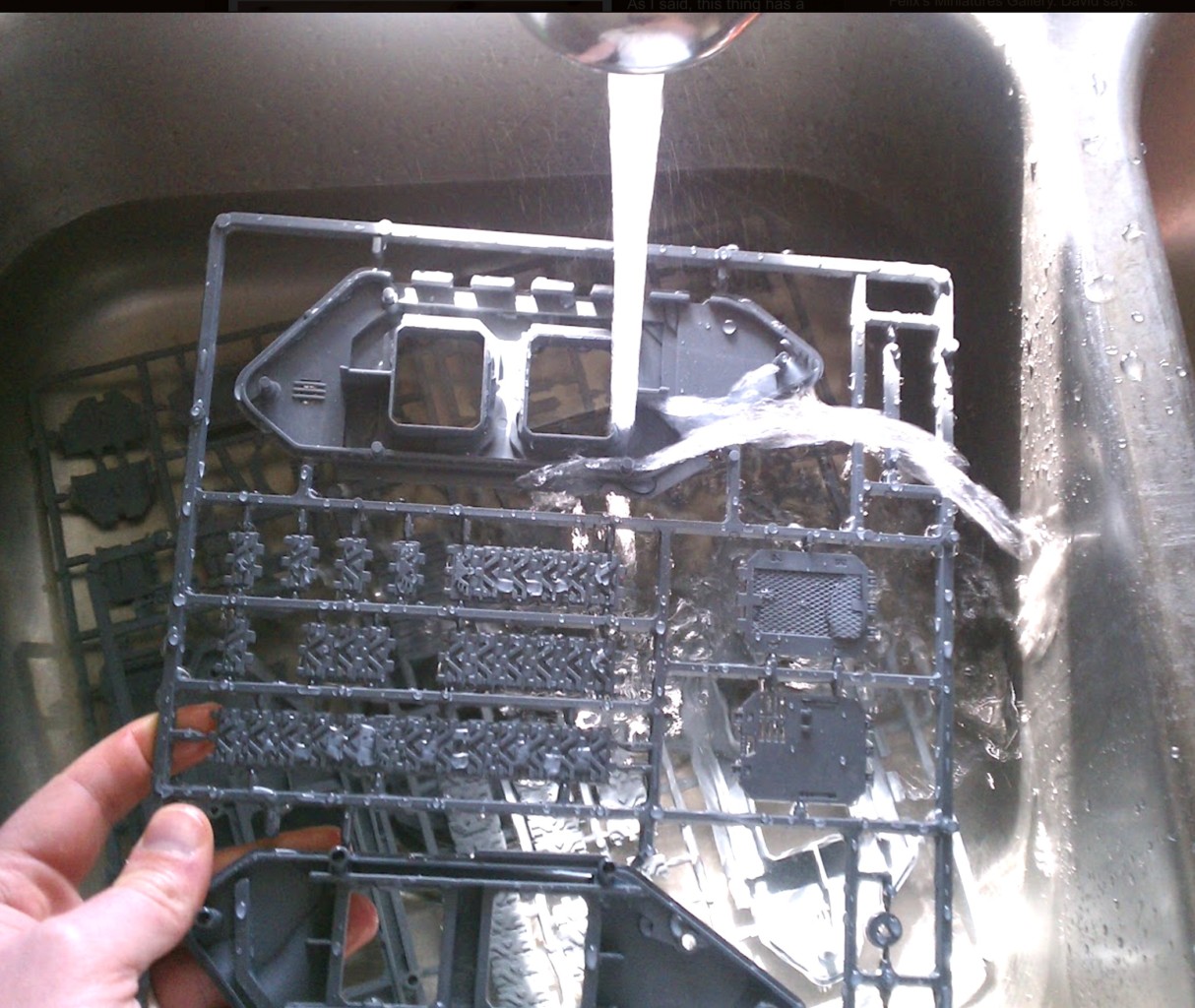
For certain colors or types of modeling materials, a primer coat helps provide a base that will allow the paint to lay in a more consistent pattern or coat.

Another good reason to use a primer is it will allow you to see small flaws in the materials that may need filled and sanded before applying your finishing coats.
Remember that before and after priming you will want to keep the surfaces clean. Use a damp clean cloth. It is not recommended to use paper towels as they will leave fibers on the painting surface.
Should I Use Acrylic Or Enamel On Model Kits?
Acrylic Paints:
For plastic model kits, acrylic based paint is the most used and popular form of paint for plastic models. It will create the best results for most paint jobs. A few of the benefits of acrylics is shorter drying times, and you have the ability to change the flow and viscosity of the paint without changing the color saturation.
The acrylic paint is made by adding color pigment to an acrylic polymer then emulsified with water to create the final product. Sometimes acrylic paints contain various fillers that may affect the paints performance.
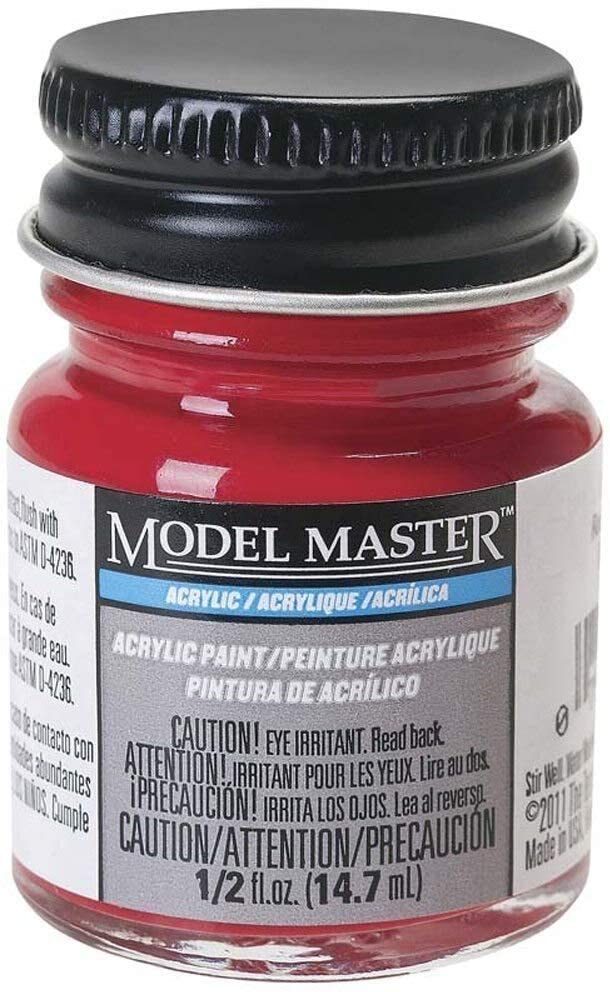
Acrylic paint has improved vastly over the years and can now perform as good as oil-based paint for most applications. A few of the benefits of acrylics is shorter drying times, and you have the ability to change the flow and viscosity of the paint without changing the color saturation.
Acrylic paint will be your best paint choice for most of your models. Acrylic-based paints can be sprayed on, brushed on, and can even be used in paint markers. This type of paint is also available in a variety of finishes or sheens ranging from flat to glossy. Here are three of the biggest advantages of using an acrylic paint:
- It’s the easiest to touch up if it ever fades out or you have smears that need fixing.
- It is water soluble so cleanup is easy by wiping up if you have a spill. If it does dry before you have time to clean it up, you can use dish soap and water to clean it up.
- Acrylic paints can be purchased at any hobby and craft stores.
Enamel Paints:
Before acrylics were available enamel or (oil based paint) used to be the most common form of paint. Oil-based paints are mix pigments with a drying oil, typically linseed oil, as a binder. As oil based paints are applied, the oil reacts with the air to dry and create a very hard finish.
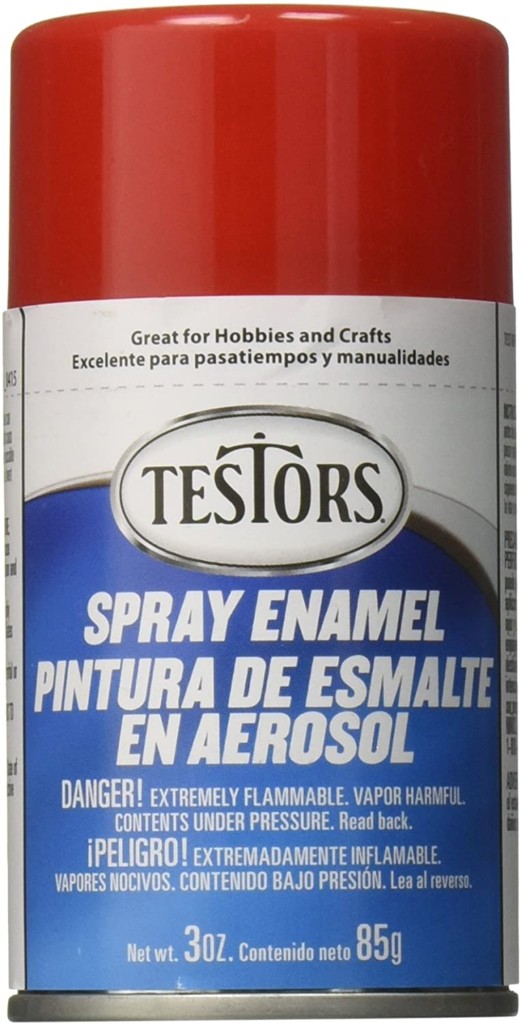
These hard finishes can create a very glossy sheen and are more durable than an acrylic paint. To change the viscosity and flow, oil based paints can be thinned or mixed with primer.
Oil based paints do have their downsides such as a slow drying time, they have to be cleaned up with turpentine, and they can give off toxic fumes.
A lot of modelers use both on any given kit, as each has its advantages. It’s comes down to personal preference. When you use an enamel paint always have plenty of ventilation and use OSHA approved respiratory protection.
What Paints Are Available For Model Kits?
There are many paints available on the market today either in spray cans, small bottles and plastic tubes. They come in every color imaginable, even in all the military colors from different eras. Vallejo and Testors are the most popular paints on the market today.
Here are a few examples of the type of kits that are available on Amazon:
Vallejo Basic USA Colors Paint Set:
- Model Color Set has been formulated with permanent pigments for fine arts; all colors are completely lightfast and opaque
- The consistency of Model Color Set allows for an extremely smooth and uniform paint film, with no trace of brushstrokes
- The water based formula of Model Color Set has been specifically developed for adherence on difficult surfaces such as metal and plastic
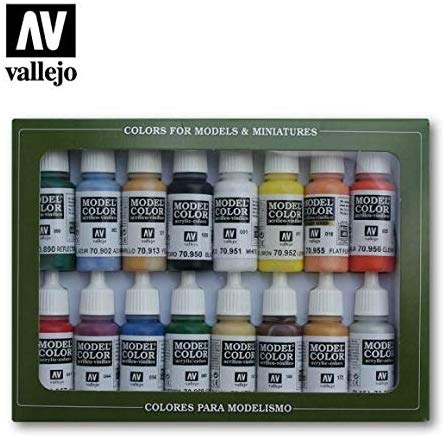
Testors 9146XT Promotional Enamel Paint Set:
- Ideal for use on wood, plastic and paper
- Enamel-based paints add vibrant color that is durable and long lasting
- Comes with one bottle of paint thinner which can be added to enamels for use in airbrushing

The Army Painter Miniature Painting Kit:
- COMPLETE SET OF 50 WARGAMER MINIATURE PAINTS + 1 DETAIL PAINT BRUSH – An exceptional model paint set that includes 50 Warpaints: 39 nontoxic acrylic miniatures paints, 5 metallics, 4 Quickshade Washes and 2 Effects paints; 1 triangular-handled Regiment detail paint brush and a detail-rich painting guide
Liquitex Professional Soft Body Acrylic Paint, Essential Set, 12 Colors:
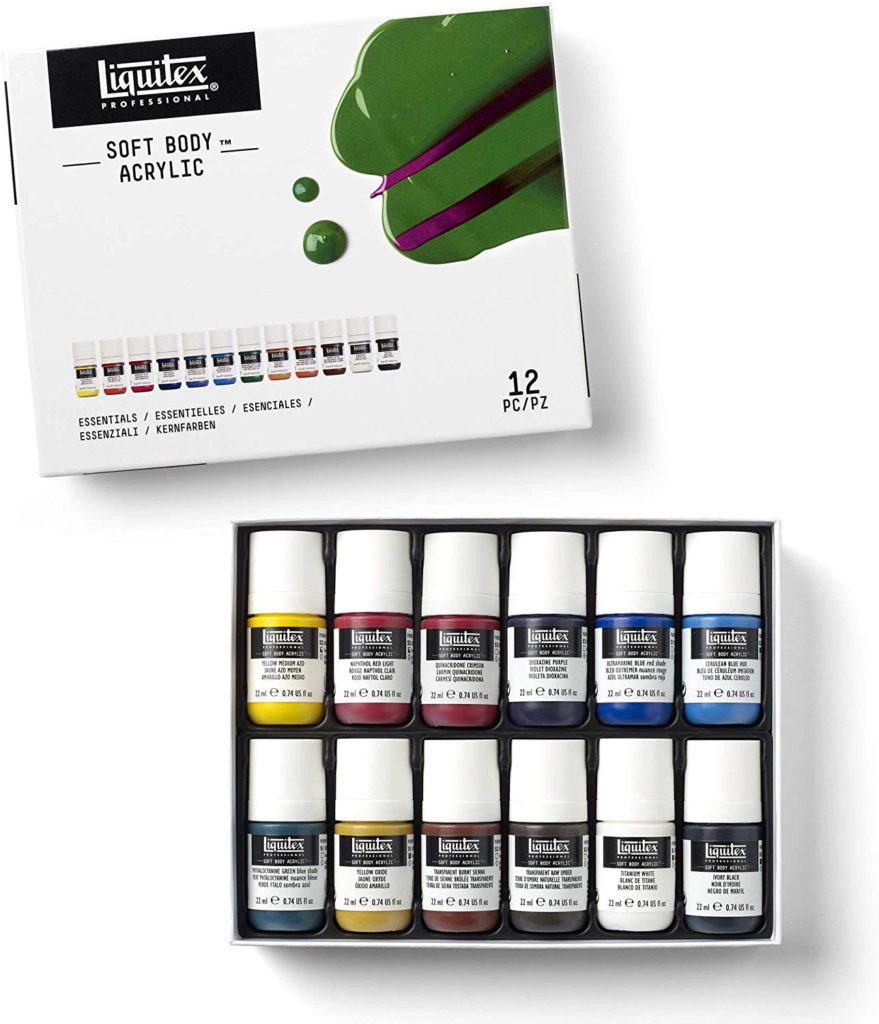
How To Apply Paints On Models Kits?
There are three choices for applying paint on model kits. You can use a paint brush of different sizes for different sizes of parts. Using a spray can spray can is a popular method and for advanced modelers there is the airbrush system.
Paint Brush:
Years ago when I first started modeling, brush on paint was pretty much all there was available. It was fun but the outcome was not like what you saw on the front of the box.
Practice over the years made them look better but the larger areas just didn’t turn out flat and glossy. This is why I started painting with spray cans. With this method I could get a glossier and deeper color and as years have gone by the color choices have drastically improved.
Today there are still parts that need to be hand painted so you will want good quality brushes, not the cheap throw away kind that we had as kids. You will also want to paint as many small parts as you can while they are still connected to the sprues.
As you paint, overlap each series of brush strokes and avoid going over partially dried paint, and keep your strokes to a minimum so the paint will level out and dry without showing brush marks.
Apply the paint using smooth, consistent strokes of the brush. Slight overlapping of the paint provides for an even surface later. Avoid going back over the area that you have already painted as this can cause the paint to drag, creating a surface that looks unrealistic. Build up color in several lighter layers, rather than a single, heavy one, as this can cover up detail. Work from light to dark as darker colors can ‘bleed’ through lighter ones.
Metallic colors should be applied with a separate brush (to avoid metallic pigment contamination) after all other colors have been applied. Leave the painted parts to dry for a day before you built them into the model.
Spray Cans:
Using spray cans will give you a smoother overall finish with no brush marks and more even coverage. If you don’t want to spend the money for an airbrush system this method can still give you good results.
Here are four quick tips for spray painting:
- Clean the model before painting
- Secure parts to be sprayed
- The paint will perform better if it’s warmed and well shaken
- Put on your respiratory protection: An OSHA-rated two-canister mask
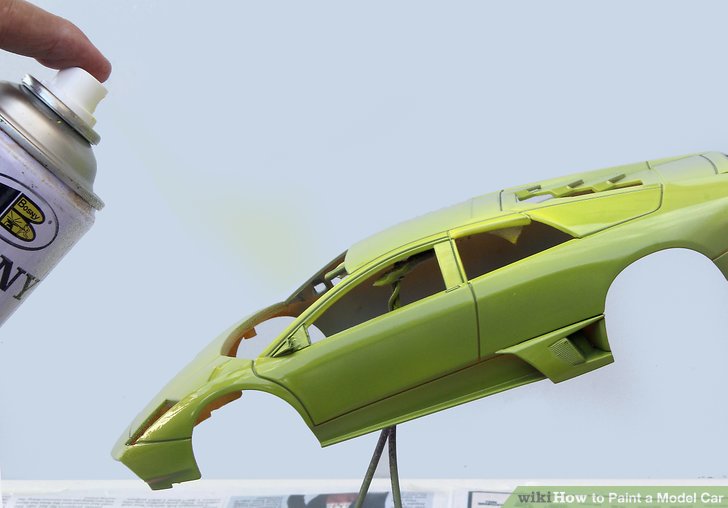
Airbrush:
Of all the ways to paint a model, the most effective and precise means is the airbrush.
To give a simple explanation an airbrush draws in compressed air and paint, then atomizes the mix at the tip of the airbrush, and sprays it toward the model. The source for air can be a can of propellant, but just about all modelers use a compressor.
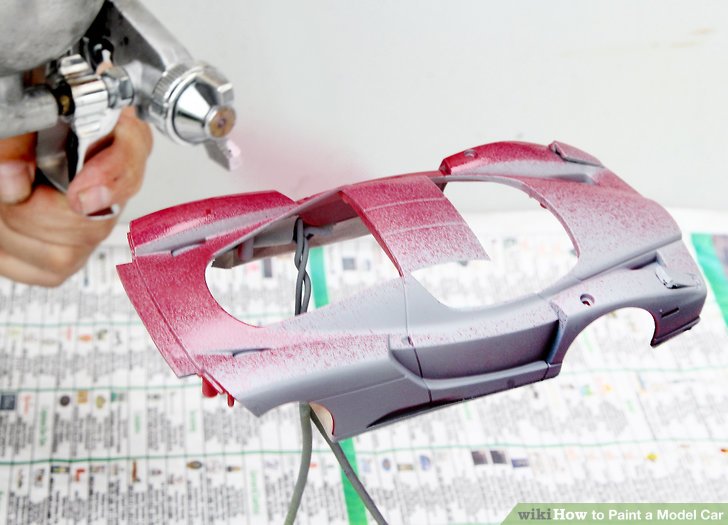
The main types of airbrush are:
- The first and best for beginners is the single-action, external- or internal-mix. The trigger only controls the flow of air and the amount of paint is controlled by using a thumbscrew.
- The second choice and more for experienced painters is the double-action, internal-mix. On the double-action airbrush the trigger controls both the pressure of air and the volume of paint sprayed.
How To Get A Great Finish On A Model After Painting
Getting your model to have a deep lustrous paint job will involve a few steps just like on a full size car’s new paint.
- Gently wet sand your final color coat with a 2000 grit wet/dry paper.
- Shoot or brush your model with a clear coat.
- Use Pledge Furniture polish to wipe down the model after the final top coat.
- Then wax the body with a good car wax.
Another method is to use 3M Finecut rubbing compound to get the paint smooth. Once you get it smooth use 3M Imperial Hand Glaze to really make it shine.
Heres a method if you have orange peel:
- Be sure you have enough clear coats on
- Start with a 3200 grit sheet of sanding pad
- Continue ton with 3600, 4000, 6000, 8000 and lastly to 12,000 which is your final pad.
- It is not necessary to put much pressure on your pad when rubbing out your paints.
It is extra work to bring out the kind of paint job these methods will bring to your model but it is well worth it in the end.
Final Thoughts
Whichever paint you choose you its best to practice before applying to your model. Everyone can become a proficient painter with a little practice.
Happy Modeling!
More info here on painting models
Related Topics
Do you have to prime a plastic model before you paint it? It’s not absolutely necessary, but most model enthusiasts prefer to prime their projects before painting them. Use a thin coat so you don’t obscure any details. The primer will slightly roughen the surface of the model, making it easier for paint to stick.
Can you use regular spray paint on a plastic model? Usually. Although not all spray paints are safe for plastic, but most paints you buy in a hobby store should work. Check the can carefully to make sure it states that it can be used on plastic.
What is the biggest model scale? From front to back, the most common scales are: 1/144, 1/72, 1/48, 1/32, and 1/24. The smallest (1/144 scale) would be a little more than 2½” long; the biggest (1/24 scale), slightly more than 16. long. There are some models such as motorcycles that are built in larger scales still.
What are some of the best model car kits in 2020 for adults?
| Model | Parts | Length |
|---|---|---|
| Tamiya – Ferrari LaFerrari | 173 | 7 7⁄8″ |
| Revell – Camaro Zl-1 | 48 | 7 5⁄8″ |
| Tamiya – Nismo R34 GT-R Z-Tune | 94 | 7 1⁄2″ |
| Tamiya – Honda S2000 | 89 | 6 13⁄16″ |
Leave a comment:
